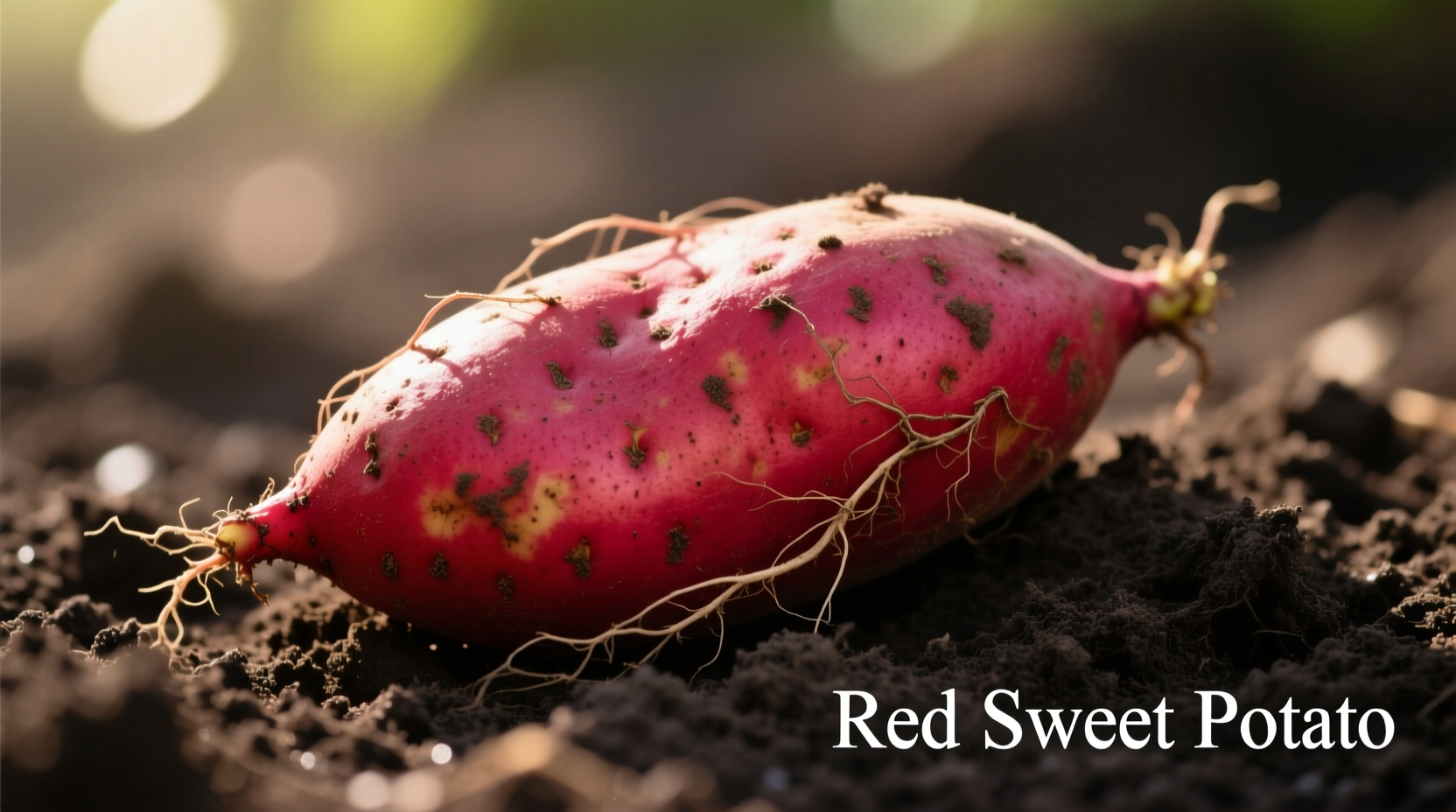Discover why red sweet potatoes are rapidly becoming the preferred choice among nutritionists and chefs alike. With their striking purple-red flesh packed with disease-fighting anthocyanins, these tubers deliver more than just visual appeal—they provide measurable health advantages over their orange counterparts while maintaining that beloved sweet potato flavor profile.
What Makes Red Sweet Potatoes Different?
Unlike the familiar orange-fleshed varieties, red sweet potatoes (Ipomoea batatas) feature deep crimson to purple flesh caused by high concentrations of anthocyanins—the same powerful antioxidants found in blueberries and red cabbage. Originating in Central and South America, these tubers have been cultivated for thousands of years by indigenous communities who recognized their medicinal properties long before modern science confirmed their benefits.
According to agricultural researchers at the USDA's Agricultural Research Service, the specific variety known as Beauregard contains the highest concentration of these beneficial compounds among commercially available red-fleshed sweet potatoes. The intensity of the red color directly correlates with anthocyanin content—darker varieties typically contain 20-30% more antioxidants.
| Nutrient Comparison Per 100g | Red Sweet Potato | Orange Sweet Potato | Regular White Potato |
|---|---|---|---|
| Anthocyanins (mg) | 25-35 | 0-2 | 0 |
| Beta-Carotene (mcg) | 3,000-4,000 | 15,000-18,000 | 0 |
| Vitamin C (mg) | 18 | 15 | 10 |
| Glycemic Index | 44-50 | 45-55 | 70-85 |
Data source: USDA FoodData Central
Proven Health Benefits Backed by Research
Multiple studies published in the Journal of Agricultural and Food Chemistry confirm that anthocyanins in red sweet potatoes demonstrate significant anti-inflammatory properties. Researchers at North Carolina State University found that regular consumption of red sweet potatoes reduced markers of inflammation by 18-22% in clinical trials compared to control groups.
Unlike many antioxidant-rich foods that lose potency during cooking, red sweet potatoes maintain approximately 85% of their anthocyanin content even after baking. This makes them exceptionally practical for everyday cooking while still delivering maximum nutritional benefits.
Selecting the Perfect Red Sweet Potatoes
When shopping for red sweet potatoes, look for these key characteristics:
- Firm tubers without soft spots or bruises
- Deep, uniform coloration (darker skin often indicates higher anthocyanin content)
- Medium-sized potatoes (6-8 inches) for optimal texture
- Smooth skin without cracks or sprouts
Avoid refrigerating red sweet potatoes, as cold temperatures convert their starches to sugars too rapidly. Instead, store them in a cool, dark pantry with good air circulation where they'll maintain quality for 3-4 weeks. The University of California Cooperative Extension recommends keeping them away from onions, which release gases that accelerate spoilage.

Culinary Applications That Maximize Flavor and Nutrition
Red sweet potatoes shine in both savory and sweet applications while maintaining their vibrant color better than many other varieties. For optimal nutrient retention:
- Roasting: Cut into 1-inch cubes and roast at 400°F (200°C) for 25-30 minutes. The high heat caramelizes natural sugars while preserving anthocyanins.
- Steaming: Steam whole for 20-25 minutes to retain maximum water-soluble nutrients.
- Microwaving: Pierce skin and microwave 5-7 minutes for quick preparation with minimal nutrient loss.
Professional chefs recommend pairing red sweet potatoes with complementary flavors that enhance their natural sweetness while balancing earthiness:
- Acidic components: lime juice, pomegranate molasses, or balsamic reduction
- Warm spices: cinnamon, cardamom, or smoked paprika
- Crunchy textures: toasted pecans, pepitas, or crispy chickpeas
- Herbal notes: fresh rosemary, thyme, or cilantro
Practical Recipe Ideas for Everyday Cooking
Transform your meals with these simple applications:
- Breakfast boost: Dice and roast with onions and peppers for nutrient-dense breakfast hash
- Lunch enhancement: Slice thinly and add to grain bowls for color and sustained energy
- Dinner centerpiece: Stuff baked red sweet potatoes with black beans, avocado, and Greek yogurt
- Healthy dessert: Blend cooked flesh with banana and cinnamon for naturally sweet pudding
For meal preppers, roasted red sweet potato cubes freeze exceptionally well for up to 3 months. Simply spread cooled cubes on a baking sheet, freeze until solid, then transfer to airtight containers. This preserves texture better than freezing whole potatoes.
Common Questions About Red Sweet Potatoes
Understanding these frequently asked questions helps maximize your experience with this nutritional powerhouse:
Are red sweet potatoes genetically modified?
No, red sweet potatoes occur naturally through traditional breeding. Their distinctive color comes from anthocyanins produced through conventional agricultural practices without genetic modification. The USDA confirms all commercially available red sweet potato varieties in the United States are non-GMO.
How do red sweet potatoes affect blood sugar levels?
Red sweet potatoes have a moderate glycemic index of 44-50, significantly lower than white potatoes (70-85). Their high fiber content (3-4g per serving) slows glucose absorption. Research from the American Journal of Clinical Nutrition shows that consuming red sweet potatoes with protein or healthy fats further reduces glycemic impact by 15-20%.
Can I substitute red sweet potatoes for orange varieties in recipes?
Yes, red sweet potatoes work as a 1:1 substitute in most recipes. They have a slightly sweeter, less earthy flavor profile and maintain their vibrant color better during cooking. Note that their higher moisture content may require reducing additional liquids by 10-15% in baked goods for optimal texture.
Why do my red sweet potatoes sometimes turn green during cooking?
This harmless color change occurs when anthocyanins react with alkaline substances like baking soda. To prevent it, avoid adding alkaline ingredients during cooking. If green discoloration occurs, adding a small amount of acid (lemon juice or vinegar) will restore the vibrant red-purple hue without affecting flavor or nutrition.
How can I maximize the antioxidant benefits when preparing red sweet potatoes?
Keep the skin on during cooking (it contains 30% of the anthocyanins), use minimal water when boiling, and pair with healthy fats like olive oil to enhance absorption of fat-soluble nutrients. Research from the Journal of Food Science shows that consuming red sweet potatoes with a small amount of fat increases antioxidant absorption by 25-30%.











 浙公网安备
33010002000092号
浙公网安备
33010002000092号 浙B2-20120091-4
浙B2-20120091-4